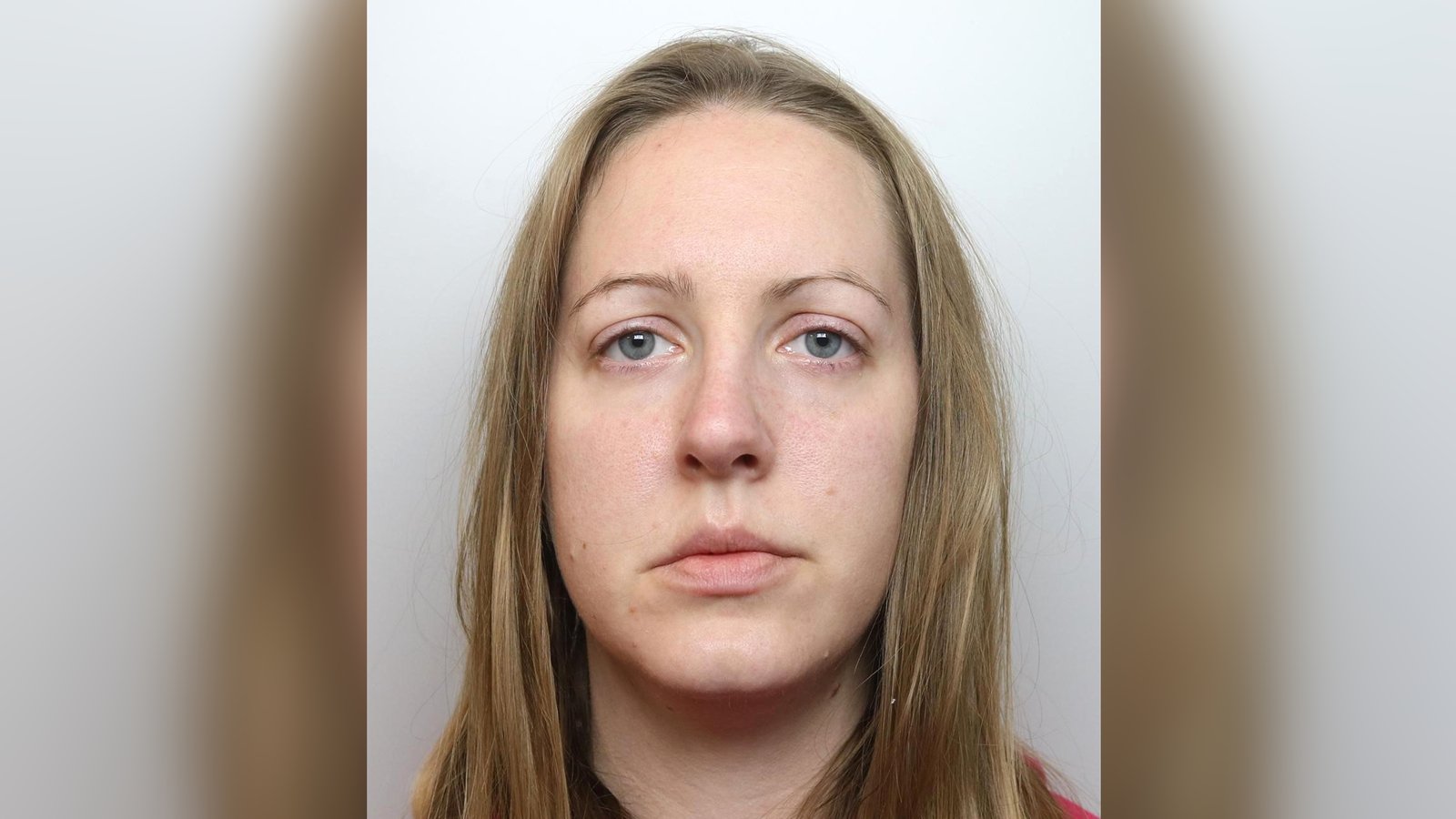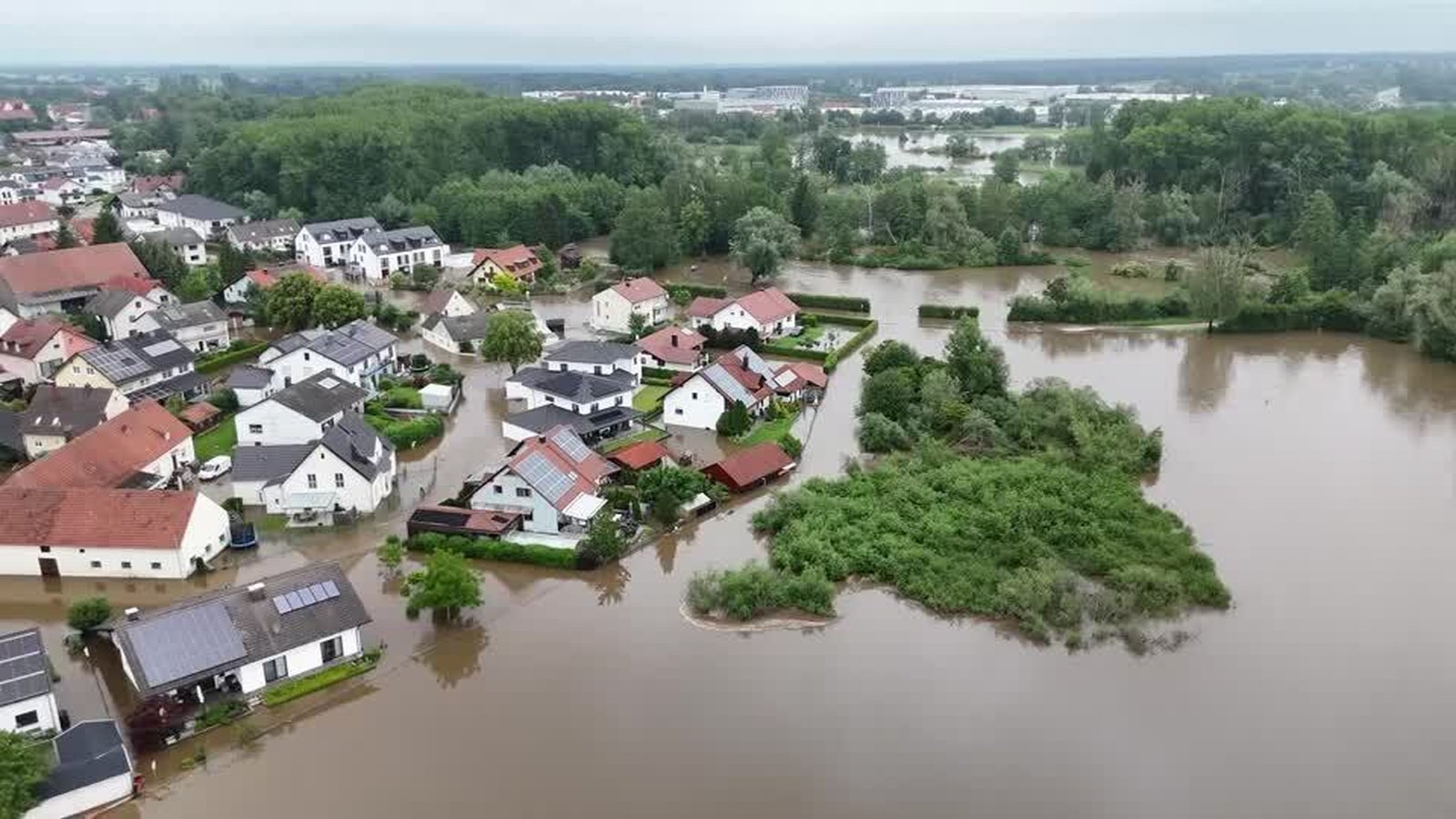Five months from the flood, locals fear for what is next in Cork
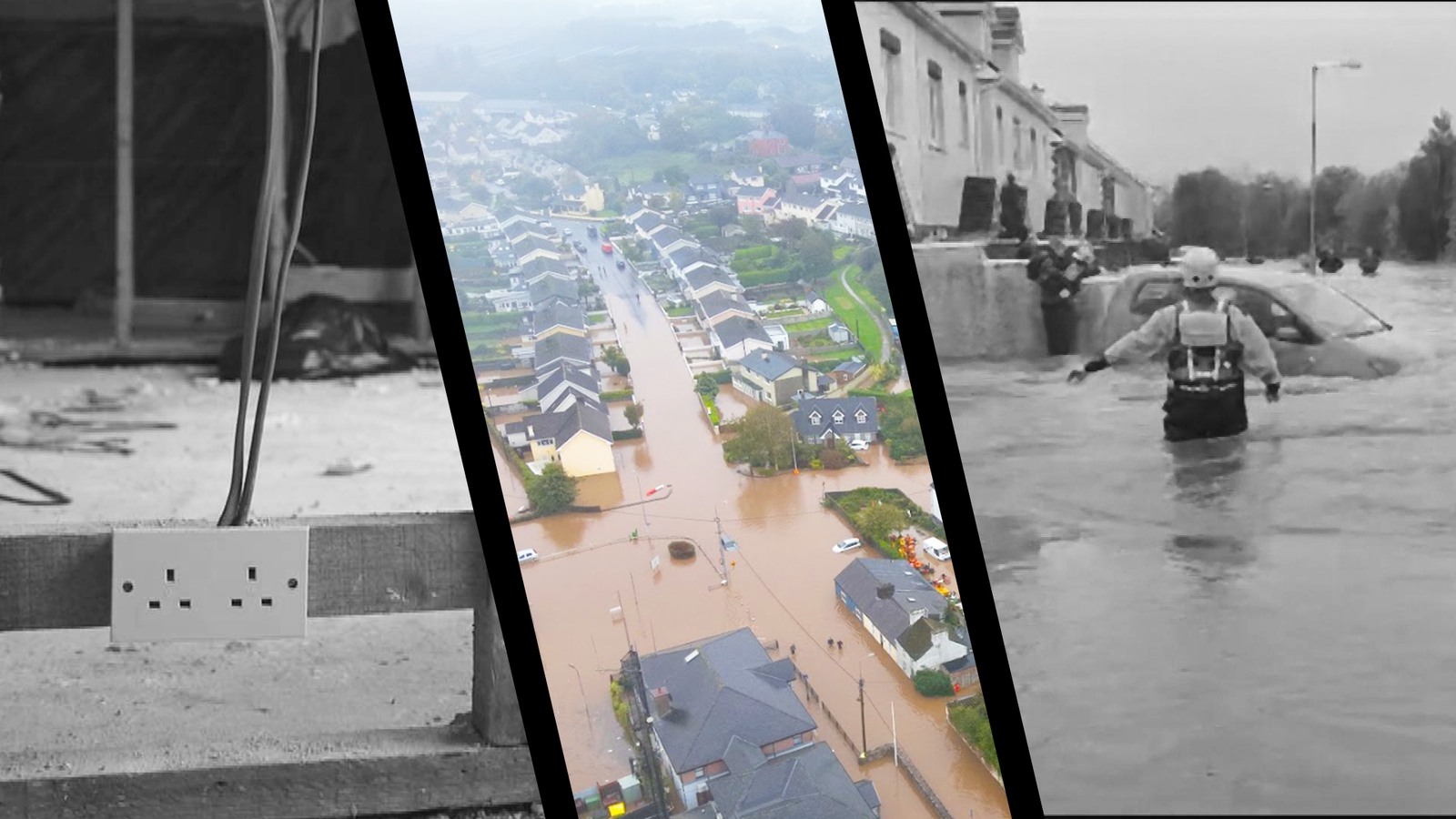
It is five months since Storm Babet flooded the HS2 hair salon on Midleton’s Main Street but its owner Laurie O’Donnell remembers every minute of the panic caused by the speed with which the water rose that day.
“By one o’clock, I opened the front door and the water was gushing in at our feet. And then by about quarter to two, it was at knee height inside here,” she says.
“By the time we got the sandbags into the front, the water was already coming in. So, we went to the back door and got all the customers out as quickly as we could. At that stage it was coming in the back door as well.”
Later, the flood water reached chest height.
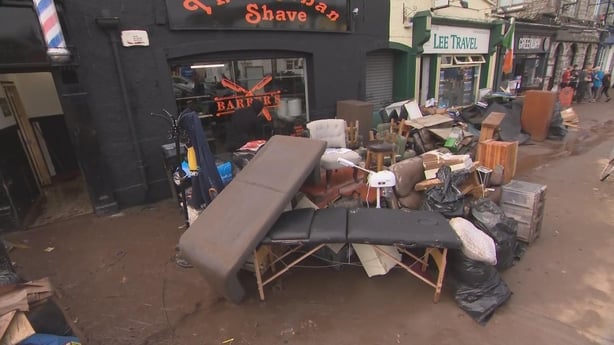
“We put everything up as high as we could. But our [front] was window smashed, so everything was taken out with it.”
Nine kilometres away in Mogeely, County Cork, Vivienne Jeffer’s home was also destroyed by flood water gushing through her property.
She remembers being at home with her two daughters, who were off school sick that day, when shortly after 10AM her phone pinged with messages from a local WhatsApp group about sandbags.
“I looked out to see what was the drama about and I saw that the water was up to my driveway. My car was already blocked in, so I couldn’t even escape at that point. And by 11, it was in my front door and instantly my four floorboards popped up, and they blocked my escape out the front door. Then, as it came in, it just got higher and higher.”
Read more: Climate study says Midleton ‘dodged a bullet’ during 2023 flood
She escaped at lunchtime when he her husband arrived back home and she was able to get the children to him through a back window.
Vivienne Jeffers says that the newly published World Weather Attribution study on Midleton carried out for RTÉ Prime Time might have surprised her in the past, but not now.
The study found that the extreme rainfall over two days during Storm Babet had “more than doubled in likelihood” because of global warming due to greenhouse gas emissions.
It also found that intensity of the rainfall had also increased because of climate change.
“If you had asked me at the start of October, I would’ve said ‘no way, weather changes all the time.’ But now I that I’ve seen it firsthand. It’s devastating. The effects of what the water can do and, and how, how dangerous it is.”
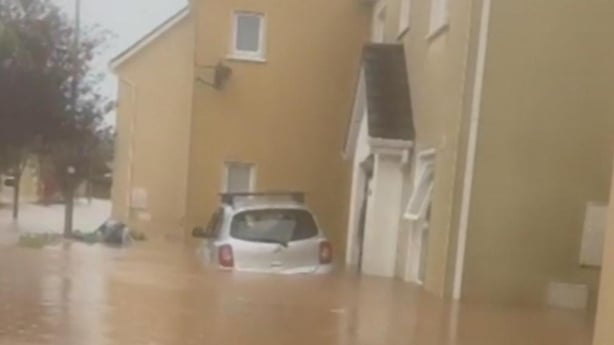
“I’ve never had a fear before, but there’s up to a hundred people in this estate alone and they’re all living in fear. We’ve seen firsthand what climate change is doing. Because in living memory, water didn’t come in in here, and all of a sudden it is,” she said.
The World Weather Attribution study also found that as we move towards a global temperature of two degrees above pre-industrial norms the risk and intensity of such extreme rainfall is likely to further increase.
Professor Mary Bourke of Trinity College Dublin says she worried about what the new attribution study tells us. Her expertise is in ‘earth surface processes’ specifically flooding.
“When I read the paper, I became very, very concerned,” she said.
“We can say now that this big event is linked to climate change. And it’s why we’re now getting bigger events. I don’t think we’ve reached the biggest event directly associated with climate change.”
Read more: All RTE stories on climate change
Midleton future concerns
In Midleton, locals like Alan Mahy say he is now on high alert because of the now constant risk of flood.
“We’ve put an awful lot of work and money into the house in the last few months to get us back to a standard that we can safely move back in. We’ve got three girls under six. But it’s not safe here directly outside our house,” he said.
The Owenacurra river which burst its banks during Storm Babet is about five metres from his front gate. During Storm Babet, the river gauge showed that the water level at the time was 2.5metres above normal.
The force of the river flow tore away part of a nearby bridge, as well as the riverbanks. As a result, much of the natural flood protection that existed before Storm Babet was swept away.
Cork County Council say they are in the process of applying for the Office of Public Works for interim flood measures to protect homes in Midleton and other towns affected by Storm Babet.
Asked if enough is being done to protect his home by Cork County Council and Government, Alan says “no, this is an immediate risk. But you have to put a brave face on things. Otherwise, you’ll go in on yourself. Right?”

Its longer-term Midleton Flood Relief Scheme, commissioned in 2017, has been in a process of design approval and is due to be completed 2029. However, even this may be further delayed since the current scheme design finalised last year is now under review since last October’s flood.
The project documents for the flood scheme design by Arup, an engineering consultancy firm working for the OPW, suggests that the previously-finalised scheme does need to be updated.
While the scheme was being designed to protect against flooding for 650 properties, Storm Babet wrought havoc and damaged 681 properties.
The relief scheme being finalised before Storm Babet was being designed to protect against what was considered to be “a one in a hundred year” river flooding, and “one in two-hundred year” tidal flooding.
Yet, the Storm Babet’s extreme rainfall and flooding turned out to be worse than that.
In addition, the Midleton attribution study found that flooding could have been far worse if it had been high tide.
For this reason, TCD’s Prof Mary Bourke says extra assurance is now needed to give confidence that Midleton’s updated relief scheme can cope with future hazards, since we are now in a “new normal” of extreme weather.
“I hope they’ll be able to reassure us that what they have planned will actually cope adequately with that and with a larger event.” she said.
“The real, crisis will be when both the river is in flood and the coast is in flood and they come together,” she added.
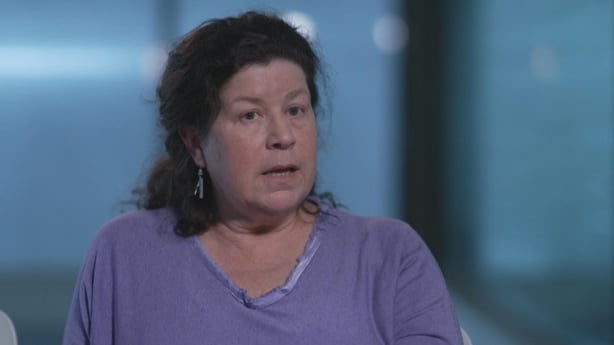
Shop owners like Laurie O’Donnell are very concerned about the slow pace of flood protections.
“We don’t have flood gates here yet. Whenever people see rain, they say, ‘are you panicking?’ That fear will always be there. We have things in place now – all our gear is on trolleys, that if we do need to take it, it’s ready to go. It’s going to be like this until 2029, until they put something in place.”
But if the people of Midleton are on edge about waiting another five years for full flood relief scheme, people living in Castlemartyr are in a worse position.
Castlemartyr Problems
Cork Council say that they are again in the process of seeking funding for interim flood measures for Castlemartyr from the OPW, having been turned down for such funding in 2018.
The town is included on a list of towns due to get a more extensive, longer term flood relief scheme.
They are on what is called ‘Tranche 2’ of the OPW’s National Catchment-based Flood Risk Assessment and Management (CFRAM) Programme.
They are what is called ‘Phase 2’ of the OPW’s National Catchment-based Flood Risk Assessment and Management (CFRAM) Programme.
This means that any comprehensive flood relief is over a decade away.
Yet Castlemartyr is a town with a history of flooding and the extreme rainfall, and flooding last October was the worst in living memory.
“Each flooding – from 2009, 2015 to 2023 – the numbers affected are increasing all the time. God only knows what the future brings for us,” says local resident Catherine Power, who has been renting a property in the town with her husband for the past five months, as their home undergoes flood damage repairs.
On her terrace, ten houses were affected, with residents ranging in age from two to 89 affected on the day. Some are still out of their homes.
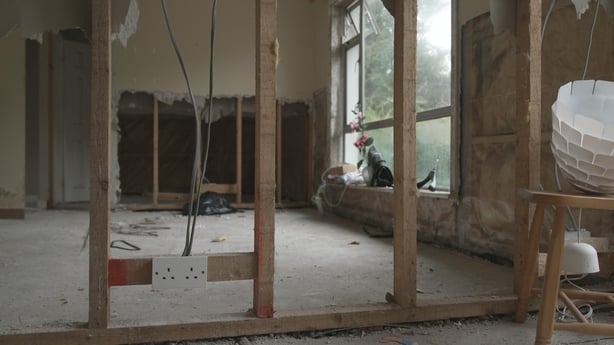
Across the road, local man JP Quinn who’s house is right on the river and a long way from being habitable again, is concerned about the worsening threat of extreme weather.
“Weather events are getting more frequent. They’re getting, they’re more damaging too,” he said.
The last major flood in 2015 didn’t affect his home, but last October’s flood overwhelmed in a matter of minutes.
“It was just an incredible amount of water in such a short period of time,” he added.
“They actually [originally] built the house a foot higher than the previous flood of record. The type of flood back in October had never been seen here before.”
The pace even interim flood measures are proceeding at is forcing people in East Cork to take action, they say.
Last week, Catherine Power joined with hundreds of others in the Midleton and East Cork Flood Action Group at a protest outside Leinster House. They brought a petition with 15,000 signatures looking for immediate action on flood relief.
“The whole of East Cork needs help now because it’s just going keep happening and next time lives are gonna be lost and we can’t have that on our hands. We have to act now,” Vivienne Jeffers said.
A special report from Oonagh Smyth and Tara Peterman on the East Cork flooding features on the Thursday 29 February edition of Prime Time at 9.35pm on RTÉ One television.



